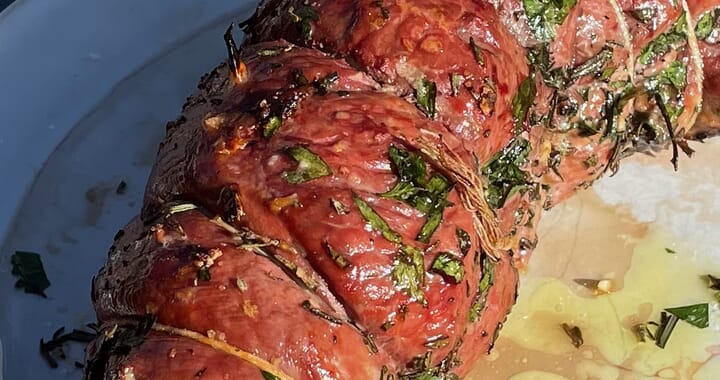I have been accused of using garlic (and onion) in everything I cook. While that isn’t quite true, garlic is usually included between somewhere and everywhere when I cook. Unfortunately, there are some people that don’t like garlic. Some even say garlic makes them sick. There is the old saying: It doesn’t matter if something is real or perceived as real. What is perceived is real. When it comes to garlic, that shouldn’t stop you from using garlic.

(Freshly harvested garlic from my niece’s garden in New Rochelle NY)
My aunt, who was German and was married to an Italian, was allergic to garlic. She said it makes her sick. Aunt Margaret Mary was a selective eater. Ironically, my mom, her sister, is as adventurous an eater as you will find at 100 years old. When it comes to food, it is hard to imagine that two people that grew up together could be more different.
In another irony, my cousin Buddy, is married into an Italian family where the patriarch was allergic to garlic. Mr. Galante ran a “vending machine and amusement park” business based in Long Island City New York. (I once asked his son if it was true that his father was in the Mafia. He said: “No but a lot of his friends were”.) After he passed away, I asked his wife what it was like cooking for an Italian that was allergic to garlic. She said: it was awful, there were so many things I couldn’t cook.
Food allergies are a serious business. Research tells us that:
- Researchers estimate that up to 15 million (5%) Americans have food allergies, including 5.9 million (8% ) children under age 18. That’s 1 in 13 children, or roughly two in every classroom.
- About 30 percent of children with food allergies are allergic to more than one food.
- The Centers for Disease Control & Prevention reports that the prevalence of food allergy in children increased by 50 percent between 1997 and 2011.
- Between 1997 and 2008, the prevalence of peanut or tree nut allergy appears to have more than tripled in U.S. children.
- More than 170 foods have been reported to cause allergic reactions.
- Eight major food allergens – milk, egg, peanut, tree nuts, wheat, soy, fish and crustacean shellfish – are responsible for most of the serious food allergy reactions in the United States.
- Less than 20% of people that think they have a food allergy actually have a food allergy.
Again it is important to remember the old saying: It doesn’t matter if something is real or perceived as real. When it is perceived, it is real.
While there is a lot of garlic in my favorite Italian dishes, Italian food is nothing compared to Korean. The Japanese call Koreans “The garlic eaters”. Sit next to a Korean on a flight to Asia from the US and you will know that the Japanese are right. On my first trip to Korea, our host took us to a Korean BBQ restaurant. The waiter brought out a bowl of raw garlic and our Korean hosts started eating them like Americans eat peanuts. I like garlic, but that is too much for me. That is my perception.

I guess you can say garlic is a polarizing flavor. Some people like it. Some people don’t. Some people think it makes them sick. Koreans smell like they eat a lot of it. With all that said, it still is a great ingredient for tasty supper club dishes.
The featured photo is of a Roast Leg Of Lamb stuffed with parsley, rosemary and lots of Garlic
If you enjoyed this blog and similar other stories/supper club lessons follow me on Facebook and Twitter and subscribe to get future blogs at www.impromptufridaynights.com/blog and check out my book Impromptu Friday Nights a Guide to Supper Clubs. Published by Morgan James Publishing and available through most channels where books are sold.
